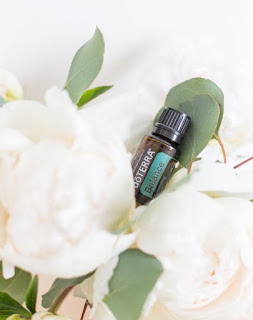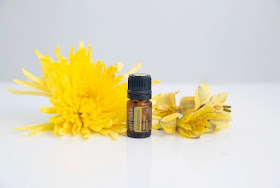A unique trait of the Nigerian Dwarf is the ability to
have both blue or brown eyes.
I have to say it is one of the things
that intrigued and originally drew me to
the breed when I first started
looking at adding goats to our
little homestead.
Our focus is now on producing great milking animals but I do have a good mixture of eye colors in my herd now, even though that is not part of our focus when breeding our animals. But many people do want to know about blue eyes in the breed and how to get more of them in their herds. So I put this post together to try and teach you about the genetics behind eye color in the Nigerian Dwarf goat.
Unlike in people, in goats blue eyes are dominant. So brown eyes are recessive. This makes it easy for us to determine what color eyes we should get from different crossings, usually. You may remember Mendel and his pea plants from back in grade school? If not, we will do a short course and get you brushed back up on your 5th grade science. ;-)
First lets start with a few terms and their definitions.
Phenotype - literally means "the form that is shown"; it is the outward, physical appearance of a particular trait. Whether the goat has blue or brown eyes.
Genotype - the specific allelic combination for a certain gene or set of genes.
Allele - one alternative form of a given allelic pair; blue and brown are the alleles for the eye color of the goat; more than two alleles can exist for any specific gene, but only two of them will be found within any individual.
Allelic pair - the combination of two alleles which comprise the gene pair
Homozygote - an individual which contains only one allele at the allelic pair; for example BB is homozygous dominant and bb is homozygous recessive; pure lines are homozygous for the gene of interest
Heterozygote - an individual which contains one of each member of the gene pair; for example the Bb heterozygote.
Dominant - the allele that expresses itself at the expense of an alternate allele; the phenotype that is expressed in the F1 generation from the cross of two pure lines
Recessive - an allele whose expression is suppressed in the presence of a dominant allele; the phenotype that disappears in the F1 generation from the cross of two pure lines and reappears in the F2 generation
Mendel's First Law - the law of segregation; during gamete formation each member of the allelic pair separates from the other member to form the genetic constitution of the gamete.
There are 2 Phenotypes for goat eye color, blue or brown. There are 4 Genotypes for goat eye color as shown above. Because blue is dominant it is represented with the B, while brown is represented with the b, because it is the recessive gene. Any time there is a dominant gene present that is what you will see as the phenotype.
So the following Genotypes will give you these Phenotypes (eye colors):
Genotype Phenotype
BB = Blue Eyes
Bb = Blue Eyes
bB = Blue Eyes
bb = Brown Eyes
So I am going to do some examples and we will see what the kids will be as a result. The top line above the box is one parent's genotype while the letters to the left outside the rectangle are the other parent's genotype. Inside the rectangle are the available different genotypes that will result from this breeding. You can also calculate the chances of getting a certain genotype/phenotype with each breeding using this method as well.
The first example is a homozygous brown eyed goat (bb) bred to a homozygous blue eyed goat (BB)
So all of the kids of this breeding will have blue eyes and they will be heterozygous for blue eyes (Bb). So you have a 100% chance of getting blue eyes from this breeding.
The next breeding we will do will be between another blue eyed goat and brown eyed goat, but this time the blue eyed goat will be heterozygous for blue eyes (Bb) instead of homozygous for blue eyes (BB).
So with this breeding you will end up with blue and brown eyed goats, there is a 50% chance of getting a heterozygous blue eyed goat (Bb) and a 50% chance of getting a homozygous brown eyed goat (bb).
The next breeding will be between a heterozygous blue eyed goat (Bb) and a homozygous blue eyed goat (BB).
All of the kids from this pairing will be blue eyed. Some will be homozygous (BB) while others are heterozygous (Bb). There is a 50% chance of them being either homozygous or heterozygous, but either way 100% will have blue eyes.
The next breeding we will do will be between two blue eyed goats, but they are bother heterozygous for blue (Bb). This is the breeding that confuses the most people when they first start breeding goats and are trying to predict the eye color of the future kids. But once you understand the genetics behind it you will no longer find it confusing.
So with this breeding most people expect they will end up with all blue eyed kids since they have been told that blue eyes is dominant in goats, and if they are breeding two blue eyed goats then they assume the only color eyes the kids of this breeding could have is blue. What you have to remember though is that when you look at a goat's eyes, you are only seeing their phenotype for that eye color, not the underlying genotype. So with this breeding you have a 75% chance of getting blue eyed kids (BB or Bb) and a 25% chance of getting brown eyed kids (bb).
The other thing to remember is these odds are for each kid born, not for the whole litter, so you could breed 2 heterozygous blue eyed goats and end up with a litter of 3-4 brown eyed kids. The reason is for each kid born there is a 25% chance of getting a brown eyed kid, not a 25% chance of a brown eyed kid in the whole litter. Just like there is a 50/50 chance of getting either a male or female kid with each breeding but we have all had either buck or doe heavy years, so you can see how the statistics don't always add up exactly like we think they should.
If you want to try and determine if you have a homozygous blue eyed goat (BB), a goat that will give you blue eyed kids every single time, no matter what you breed him or her to, you can try to determine that by doing some test breedings. The first thing to remember is the goat must have come from blue eyed parents, you could never have a homozygous blue eyed goat out of a brown eyed parent. The next step in determining if you have a homozygous blue is to do several breedings to both blue and brown eyed goats. If 100% of the resulting kids (from every breeding you ever test) are blue eyed, then there is a good chance you have a homozygous blue eyed goat.
This is all very interesting to me, I love studying genetics and trying to predict what will result with different breedings. But I do want to remind you that the eye color of the goat doesn't put milk in the pail and it should not be the focus of your breeding program if you are striving to improve the breed.
I hope this post has been helpful and hopefully not too confusing. Please let me know what you think and if you have any questions.
So tell me, what color eyes does this girl have?
What do you think her phenotype and genotype are?














